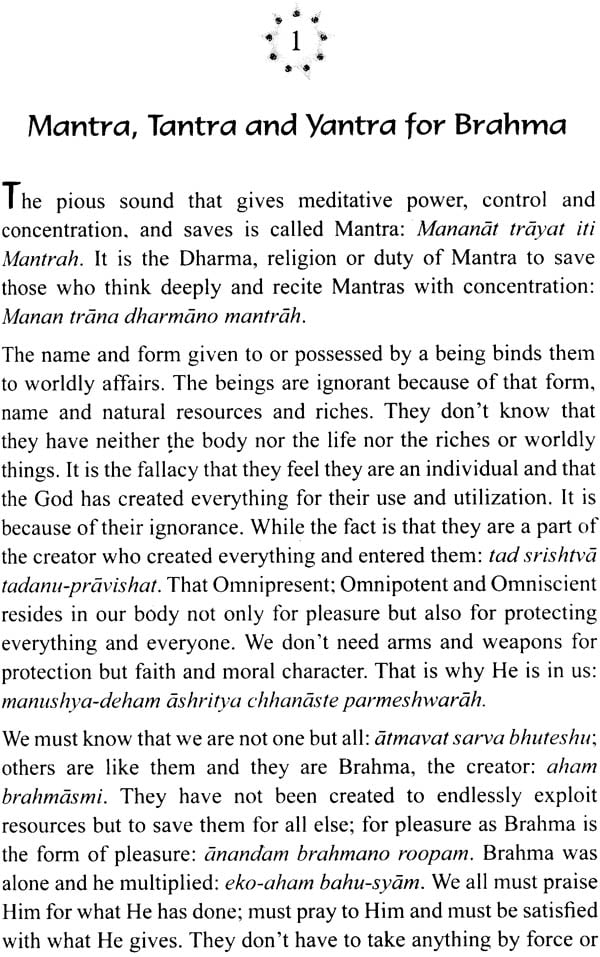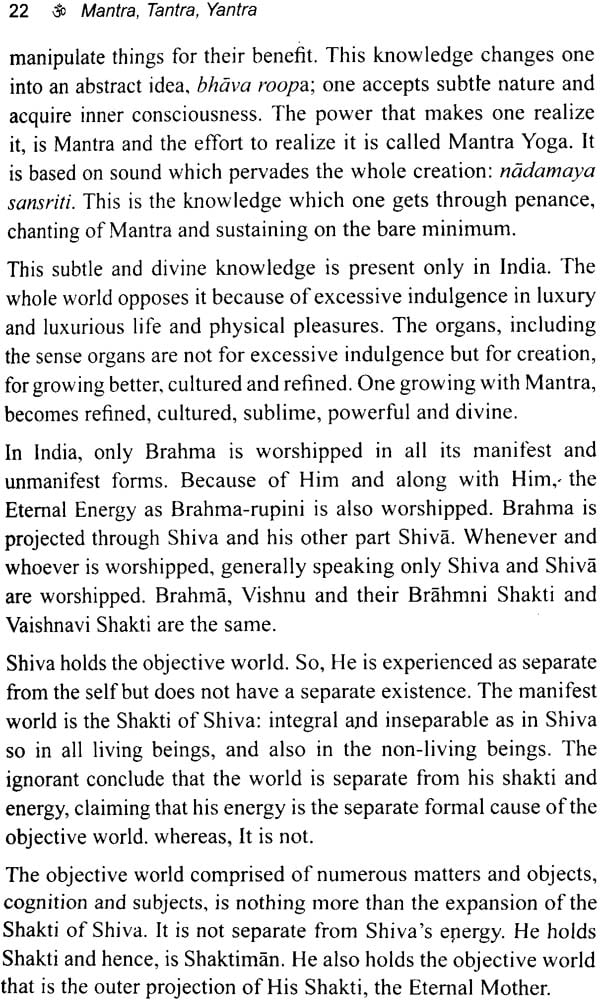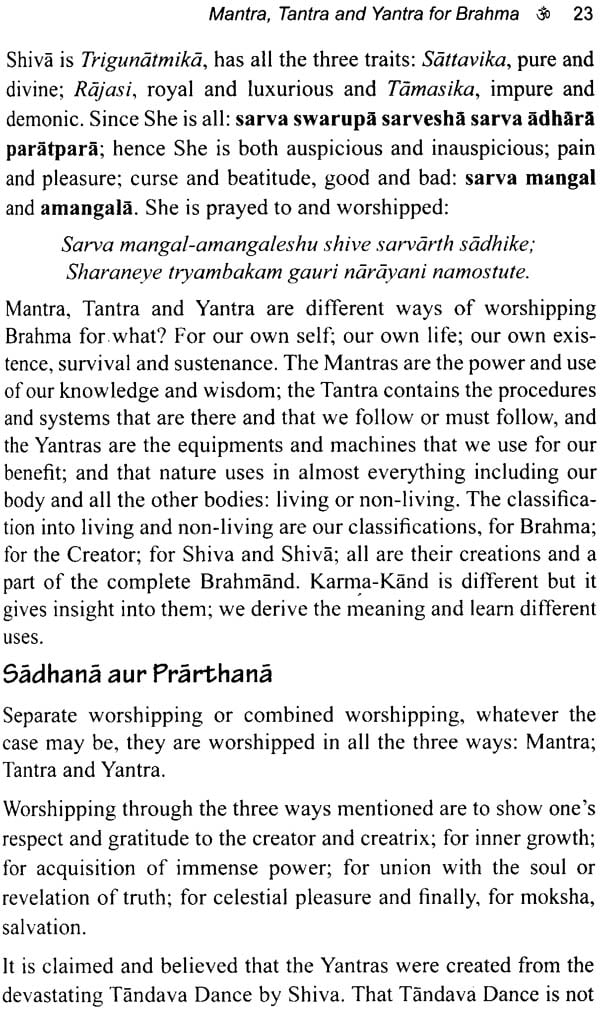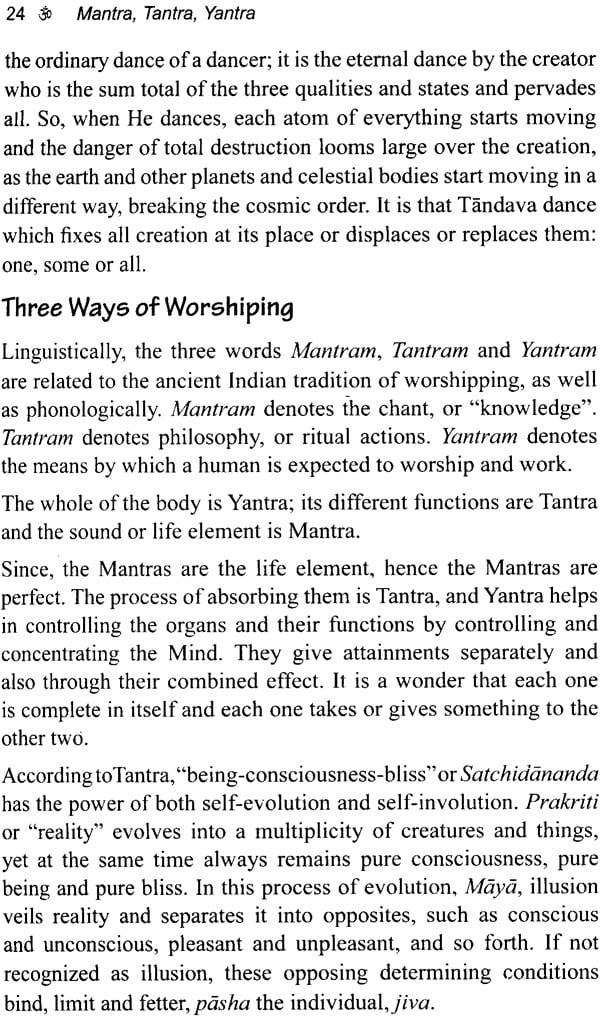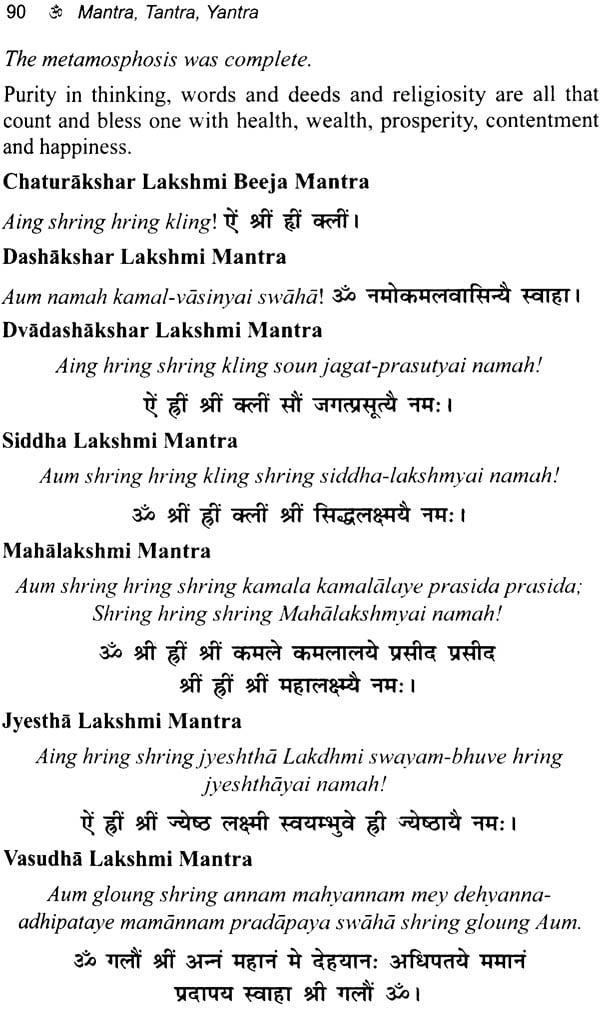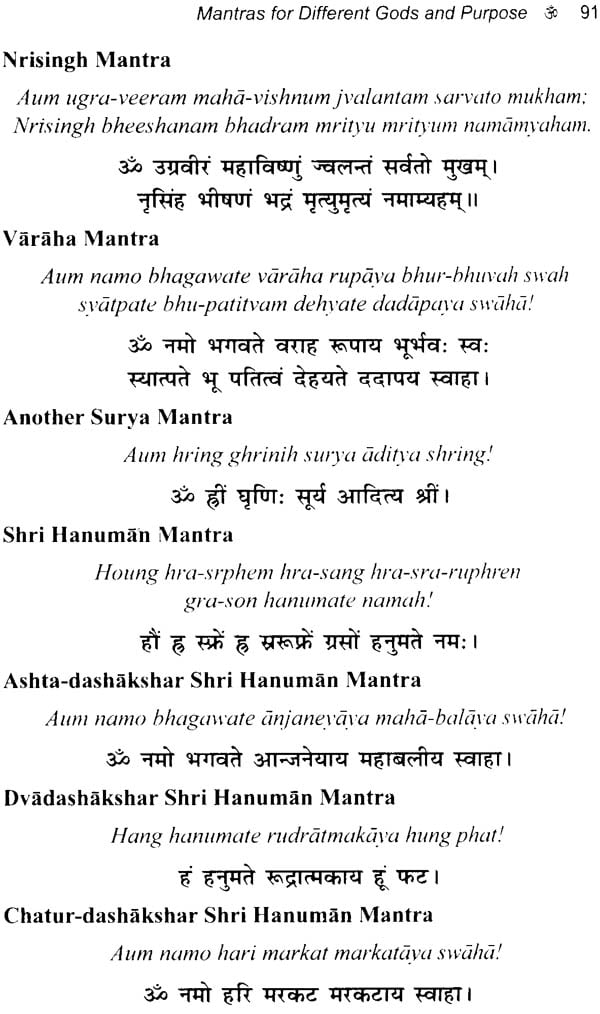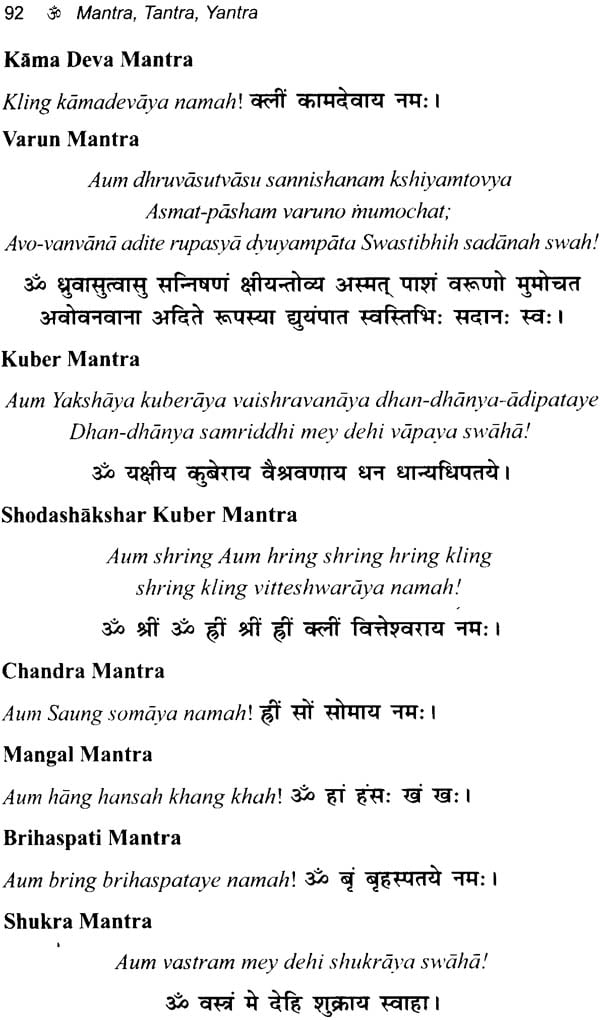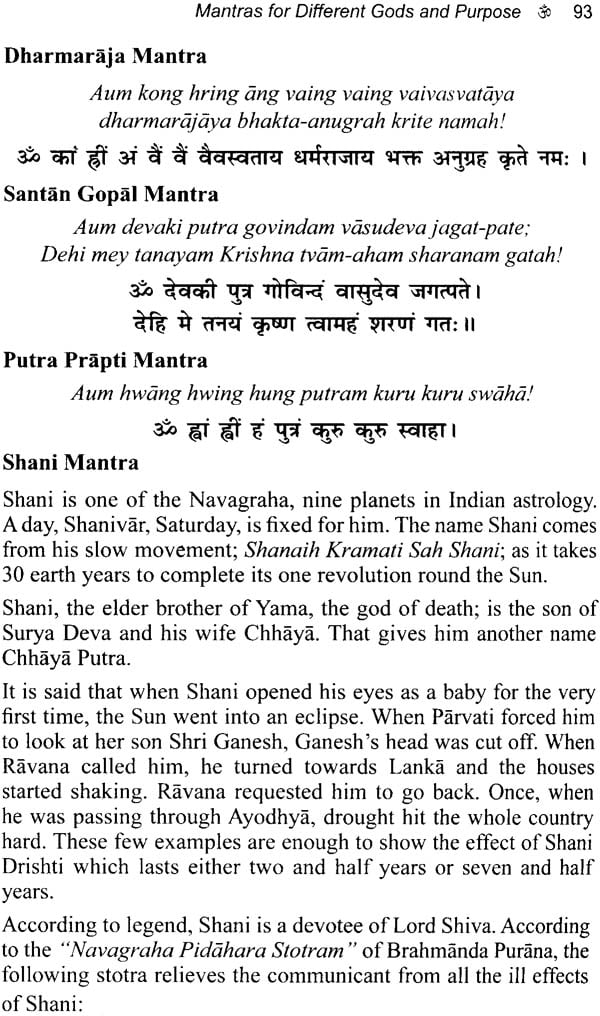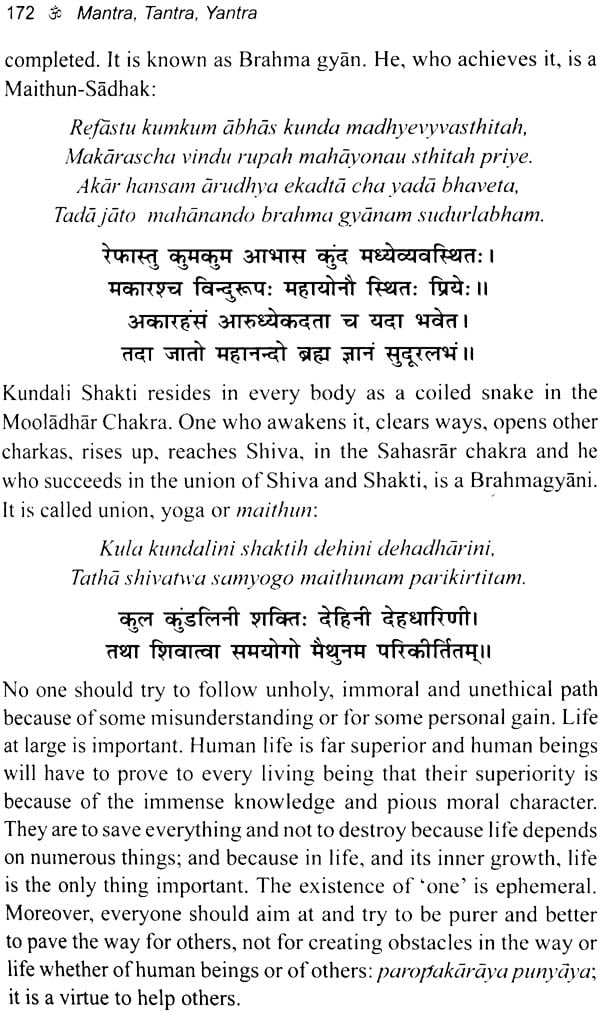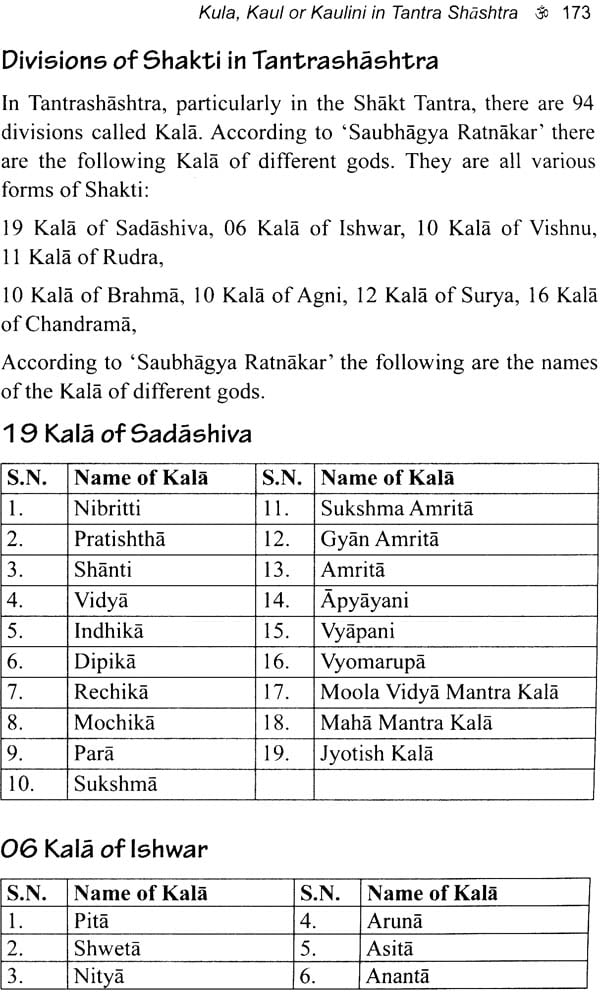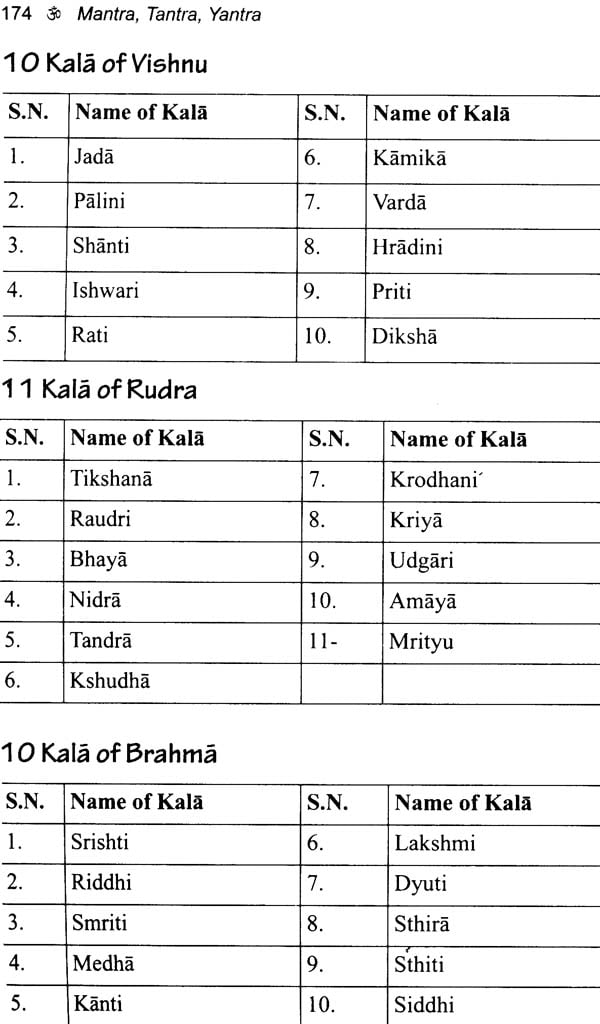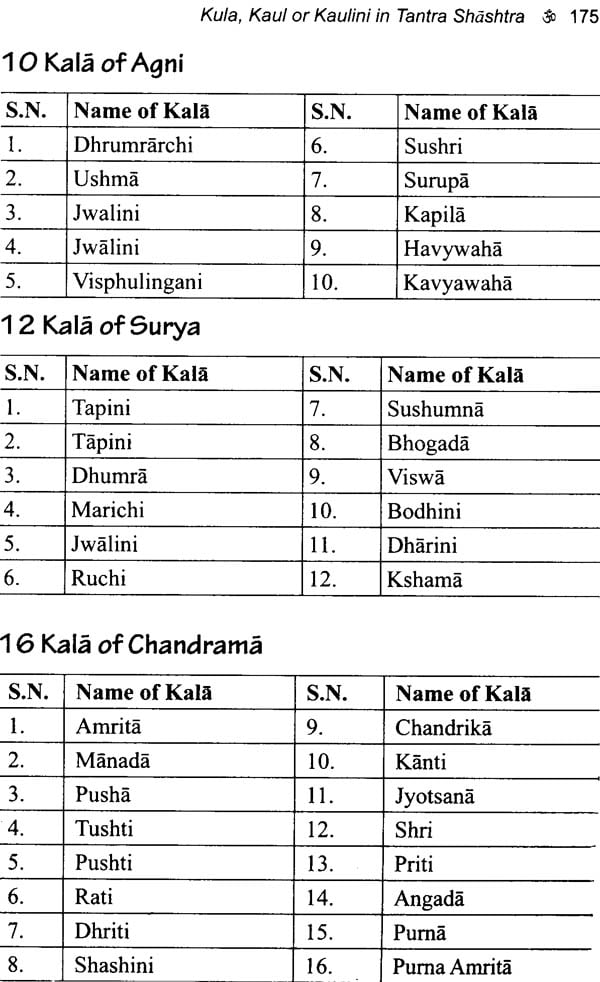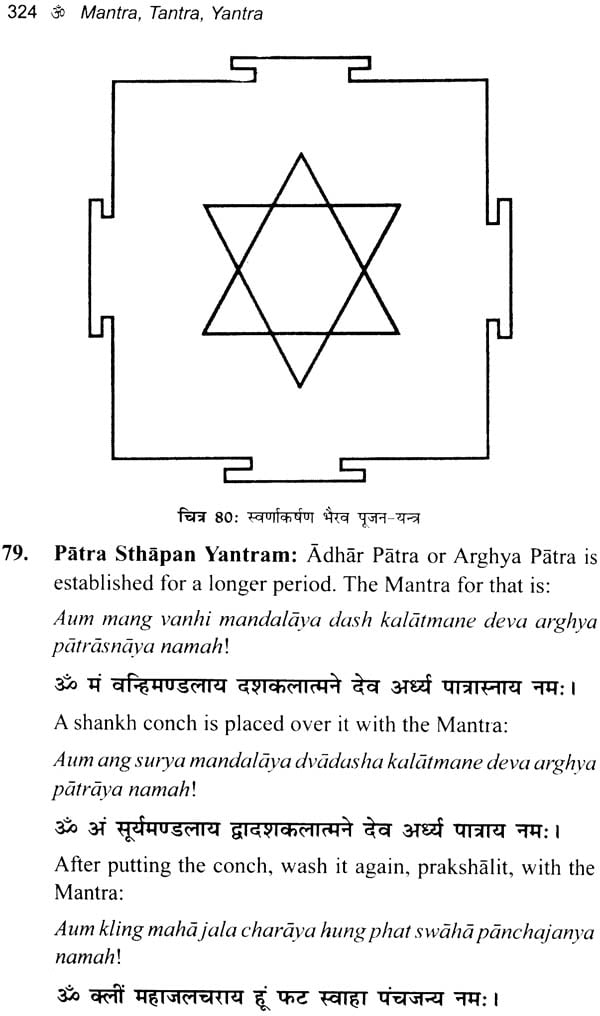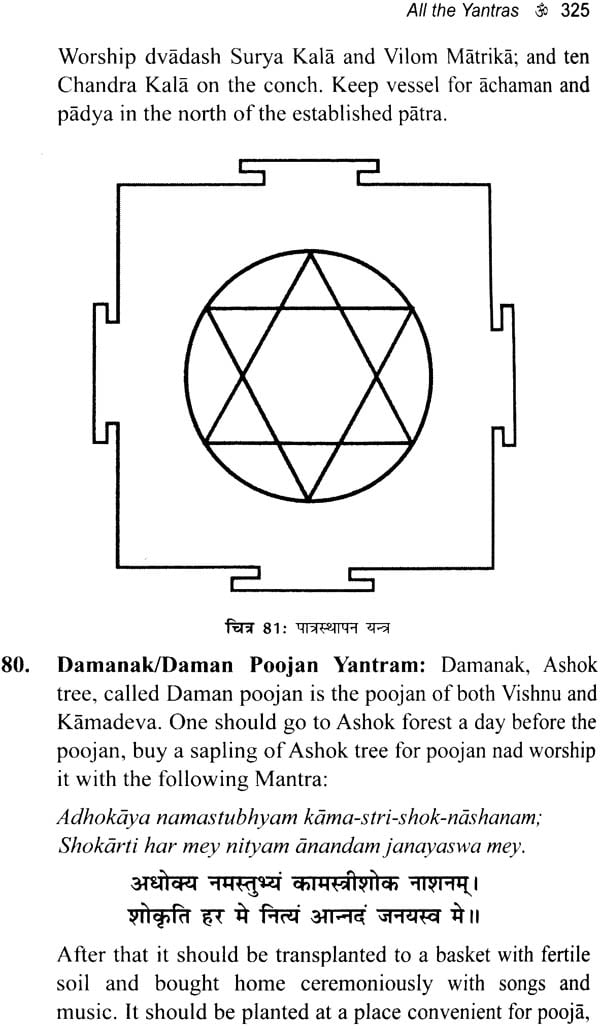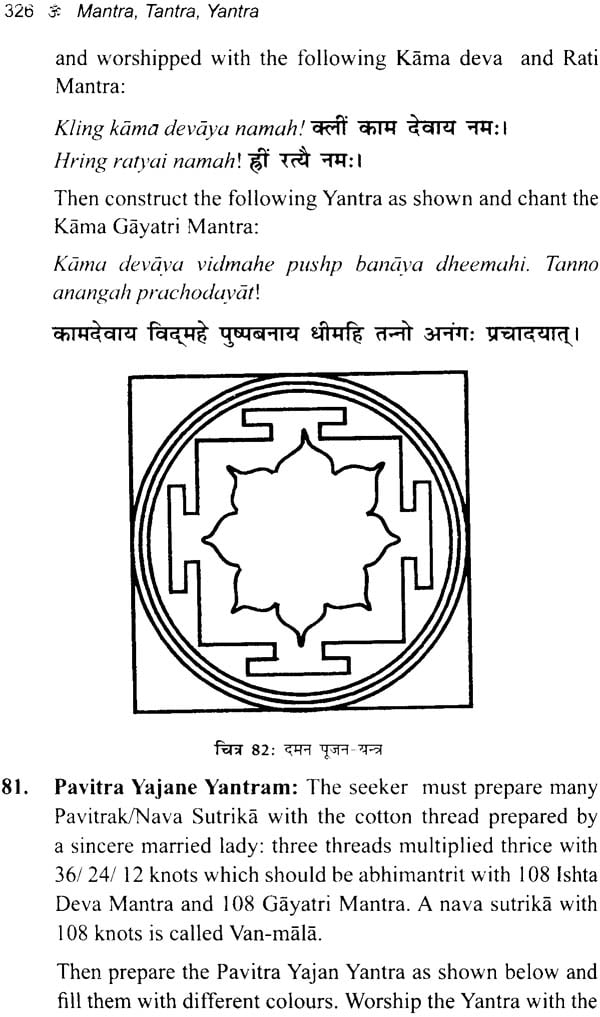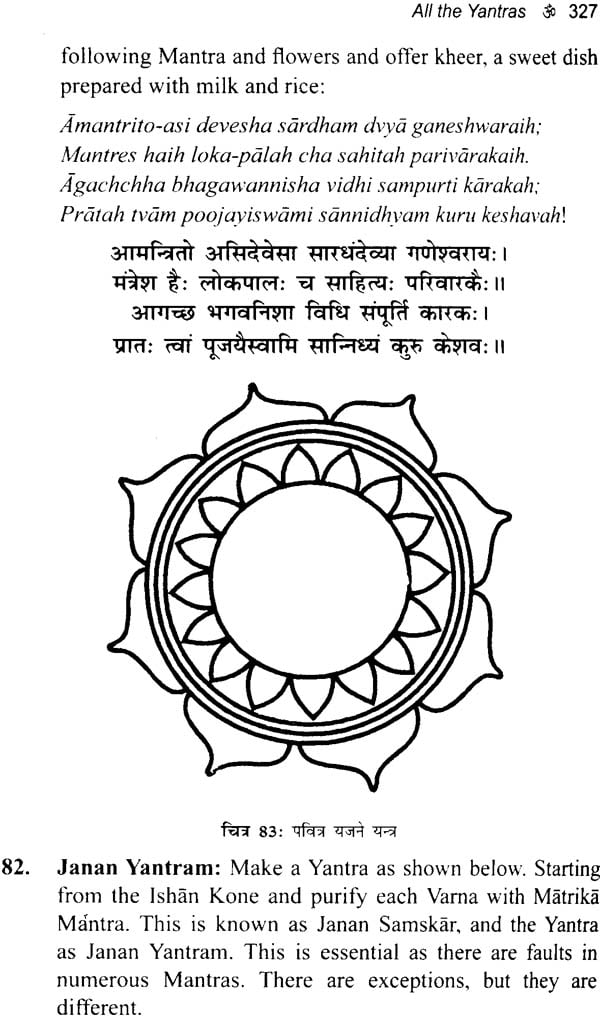
Mantra Tantra Yantra (Way of Worshipping, Inner Growth, Attainment of Celestial Power)
Book Specification
| Item Code: | NAJ068 |
| Author: | Prof. Shrikant Prosoon |
| Publisher: | PUSTAK MAHAL |
| Language: | Sanskrit Text with Transliteration and English Translation |
| Edition: | 2017 |
| ISBN: | 9788122314557 |
| Pages: | 344 |
| Cover: | Paperback |
| Other Details | 8.5 inch X 5.5 inch |
| Weight | 320 gm |
Book Description
This book presents three different ways of worshipping the Brahma, the Absolute God; and the philosophy and psychology behind the worshipping of the manifest form Shiva; pervade all and are projected through each living and non-living entity. The whole Brahmand contains sounds like Mantras and functions as Tantra or Yantra.< Separate>
The book Mantra Tanta Yantra is complete, gives comprehensive details of both the theoretical and practical aspects, and will provide insight into each aspect of these three readers; researchers; learned devotees; practitioners, Pandits; Sadhakas; Sandhus; Yogis and tantriks. It is a handbook for revelation and inner growth.
Prof. Shrikant Prasoon is a reader, teacher, thinker , poet and above all, a humanist. The more he reads and thinks, the more he writes on varied topics, but with one aim—to show man the need of nature and natural life’. He believes that all religions are integral and insparable, living and developing parts of one basic religion called Humanism; and all the systems are an outcome of the greatest celestial system, which is devised and regulated by the Unseen and Unknown Creator. A retired Professor of English, Prof, prasoon writes in Hindi with equal ease and also in samskrit.
Pustak Mahal has published his following books in English: Aesop’s Fables; Knowing Buddha; Knowing Guru Nanak; you and your Queries; Indian Scriputres; Pancha Mahabhuta Tatva & Sharira; Chanakya-Rule the World; Knowing Kabir; Hinduism: Clarified & Simplified; 16 Hindu Samskars; Rishis and Rishikas; Indian Saints and Sages; Ma Shakti and Shakti peethas; My Letters: Mahatma Gandhi; Goddess of wisdom Ma Saraswati; divine Manipulator Shri Krishna; Make Wise Decisions;
When I felt that my sojourn in Delhi was over and was returning home, Shri Rama Avatar Gupta, the Chairman of M/s. Pustak Mahal gave me his solemn assurance that he would remain in contact and keep on giving assignments for writing books. Before I was able to complete the previous assignments, I got his call and he assigned me another work of my choice: a book on Mantra, Tantra and Yantra. I have been working on these devotional ways and related things for decades. I collected my notes and diaries and the resultant work is before you: Mantra, Tantra and Yantra.
Shiva is the integral power of Brahma and Shiva is the manifest form of Brahma. Both Shiva and Shiva are one and inseparable. There is no distinction between them other than the fact that one is the male and the other is female. To worship one is to worship the other. Most people worship both but some worship Shiva and other Shiva. The worship of both is the same. This is the theory behind creation. Power is inherent in the object and the object contains power. Throughout the cosmos, whatever is male in nature is Shiva and whatever is female, is Bhagwati Uma. The praise of one is the praise of the other.
This book, Mantra, Tantra and Yantra, presents these three different ways of worshipping of the manifest form of Shiva and Shiva. Shiva and Shiva pervade all and are projected through each living and non-living entity. The whole Brahmand contains sounds like Mantras and functions as Tantra or Yantra. In other words, the total universe is based on Mantra, Tantra and Yantra; In other words, the total universe is based on Mantra, Tantra and yahtra; and inseparable from them. It is beauty behind worshipping; the aesthetic sense; scientific function and general and spiritual philosophy behind them. As we are unable to grasp the mystery behind the creation, in the same way we are unable to understand these three ways: Mantra; Tantra and Yantra. That may be our weakness but these three represent the value and power of sound; System and Machines. Our body, like the universe and other bodies has divine sound akin to life; it is itself a mysterious machine and works on a designed system. All the different systems of the body are one system; as all the systems of the cosmos are one system.
Separate worshipping or combined worshipping, whatever the case may be, they are worshipped in all the three ways: Mantra; Tantra and Yantra; and all three ways are actually one thing; oneway, and inseparable. The worshipping though the three ways mentioned above are to show one’s respect and gratitude to the Creator; for inner growth; for acquisition of immense power; for Union with the Soul, Self or Revelation of Truth; for celestial pleasure and finally, for Moksha, Salvation.
The book Mantra, Tantra, Yantra is complete and gives comprehensive details of both the theoretical and practical aspects, and will provide insight into each aspect of these three differently named but similar or one worshipping. It will definitely prove helpful to general readers; researchers; learned devotees; practitioners, Pandits; Sadhus; Yagis and Trantriks; and for that young generation who knows nothing about them and has no inkling of the emormous power they generate and give. It is a handbook for revelation and inner growth for all.
Only a has been taken from Scriptural Transliteration for long ‘a’ sound, which is otherwise impossible to write in the Roman script. Rest is as written in government papers, magazines, newspapers and general books. It will help readers to read the Mantra and Shlokas quoted in it and also the names of numerous person and books.
| Preface | 7 | |
| Obeisance and Prayers | 9 | |
| Section I (19-32): Ways for inner Growth and power | 19 | |
| 1 | Mantra, Tantra and Yantra for Brahma | 21 |
| 2 | Mantra and Yantra in Tantra | 27 |
| 3 | Mantra on Yantra | 31 |
| Section II (33-142): Mantra: Broader and Cosmic Vision | 33 | |
| 4 | Ocean of Mantras | 35 |
| 5 | Nada Brahma: Shabda Brahma | 52 |
| 6 | Different Mantras | 69 |
| 7 | Collected Mantras and Important Aspects | 80 |
| 8 | Mantras For Different Gods and Purpose | 85 |
| 9 | All Gayatri Mantras | 95 |
| 10 | Chanting and Repetition of Mantras | 106 |
| 11 | Limbs of Mantras | 121 |
| 12 | Indrajala Mantras | 126 |
| 13 | Sound Equivalent to Mantras in other Religions | 129 |
| 14 | Mantras Give Faith, Hope and Confidence | 133 |
| 15 | Need of Mantras | 139 |
| Section III (143-244) : Tentra Inside and insight | 143 | |
| 16 | Tantric Practices to please Shiva-Shakti | 145 |
| 17 | Tantra: A Mixed Practice | 157 |
| 18 | Kulu, Kaul or Kaulini in Tantra Shastra | 163 |
| 19 | Important Things to Know | 176 |
| 20 | Different Tantric Mantras | 186 |
| 21 | All Yakshini Mantras | 194 |
| 22 | Kundalini Shakti | 202 |
| 23 | Tantric Scriptures | 212 |
| 24 | Kashmiri Shaivism | 215 |
| 25 | Kularnava Tantra | 219 |
| 26 | Summary of Famous Tantra Shastras | 228 |
| Section IV (245-344): Yantra: physical; scientific and | ||
| Celestial Mechanism | 245 | |
| 27 | Yantra in Tantra | 247 |
| 28 | Shri Yantra: Shri Chakra | 253 |
| 29 | All the Yantra | 264 |
| Section V (329-344): Attainment and Use | 329 | |
| 30 | Mantra Varnas and their Meaning | 331 |
| 31 | Mantra in Life | 338 |
